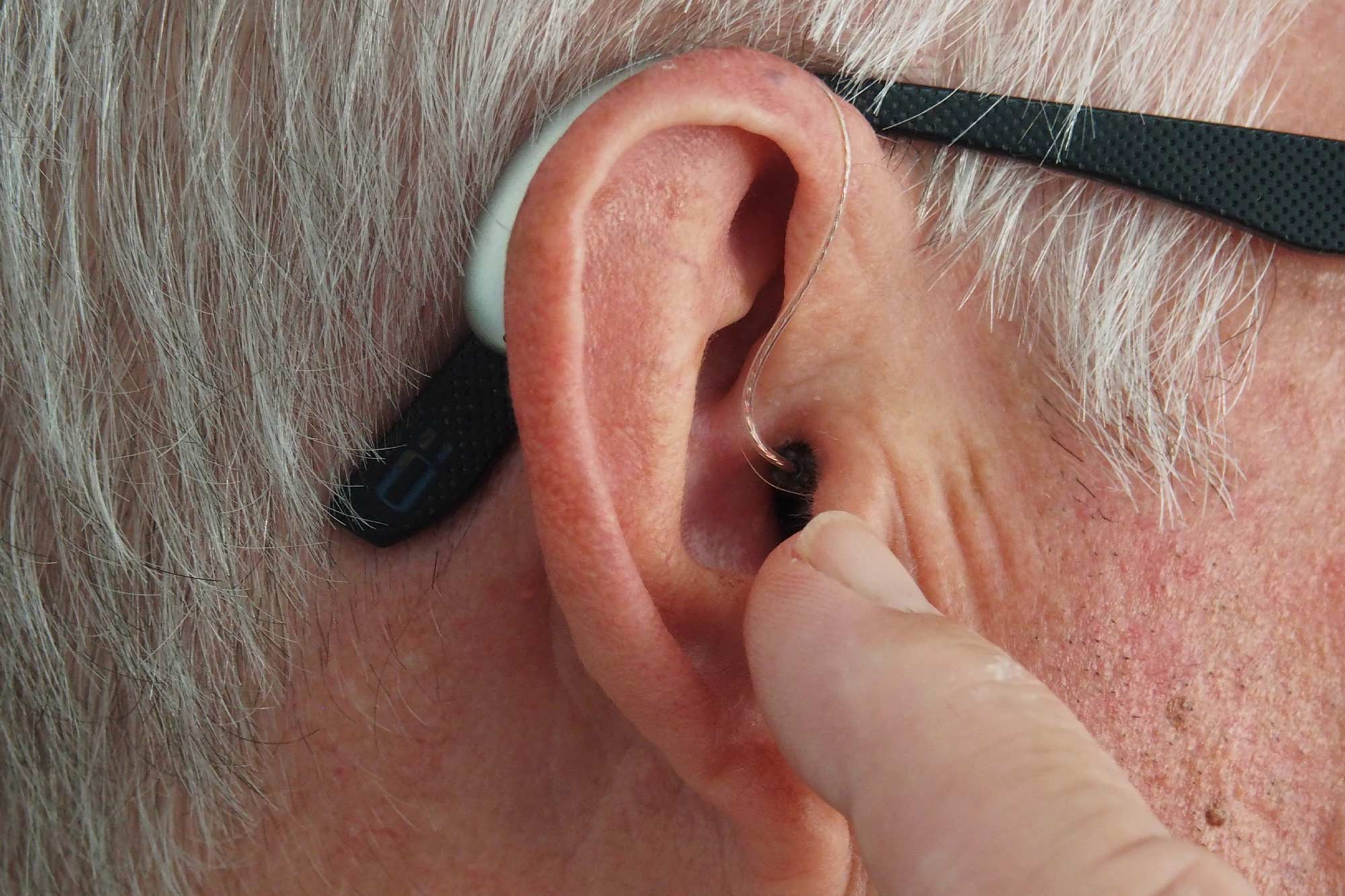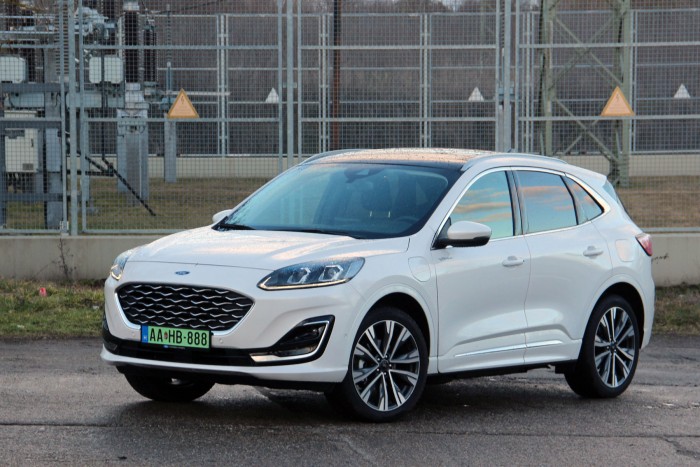The angled start button is weird, not easy to reach. When stopping, the anti-rollback stabilizes the car firmly, and only releases it with high gas, which makes it difficult to maneuver between two cars. Parking spaces are more harmonious when closed.
Depending on the model, the Kuga has a length of 4614-4629 mm, a width of 1883, and a height of 1666-1680 mm
As a hybrid car, the drivetrain works very well. Here, too, Toyota’s hybrid system stands out with its well-lubricated and refined operation. The petrol engine stops softly and the drive gently engages.
Driver support systems work well on the highway. The lane guard at the end of the indicator lever can be turned off with a single motion if it bothers you, which I’ve done many times on country roads, but on uneventful highways, the electronics that steer the car in the center of the lane were helpful and safe.
I also liked the Kuga’s three-position cruise control. There is smooth cruise control, adaptive cruise control with adjustable following distance in four stages, and also intelligent cruise control that can override posted speed limits with tag recognition, if enabled.
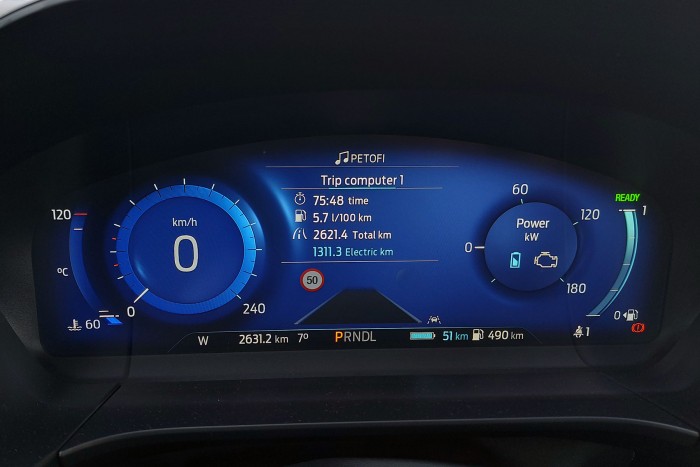
The instrument unit is digital. It shows how far we have come without the petrol engine
If we want, the car evaluates the effectiveness of the brakes after stopping. The developers have been kind to the drivers, with the system giving a 100 percent rating relatively easily.
There’s something Toyota hasn’t quite managed well with its hybrids yet, but we can be very happy about at Ford. Despite the fact that the hybrid drive largely comes from the Japanese side, the plug-in Kuga doesn’t burden our bodies with nerve-pulling hybrids.
While the regular Kuga Hybrid has a digestible noise level, yet a capable four-cylinder, PHEV with a powerful electric motor, there is no hybrid noise so much that the petrol engine growls at a constant speed even on the highway uphill, with the merciless floor gas acceleration .

Double glazing on the front side reduces wind noise
That silence may be an illusion, as Vignale’s speakers reduce noise with anti-phase noise cancellation, but no matter what’s behind it, the cabin is highway quiet. You can see on the screen how much we’ve done electrically, but the car considers everything electric when the petrol engine stalls, so it’s also responsible for rolling down hills on engine braking.
A good feature is that it is possible to charge the hybrid battery with the petrol engine. This is a very uneconomical way to generate electricity, but if we have a driving area that can only be used with an electric motor, this solution can be useful.
There will probably always be enough power reserve in the battery to give the driving electric machine plenty of help for a sprint.
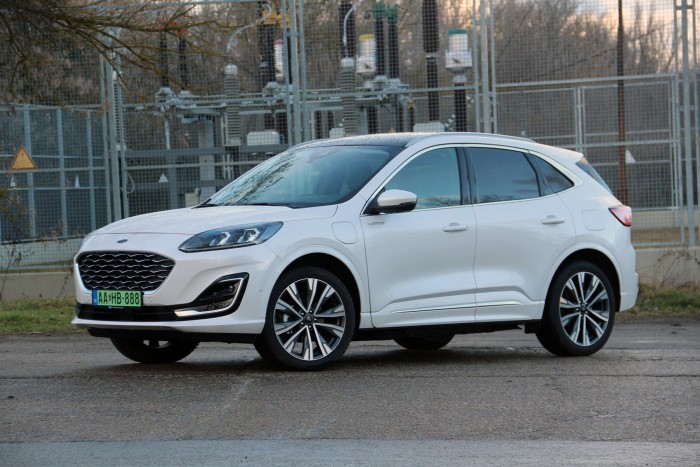
The petrol engine didn’t roar, even when accelerating on the highway with floor gas
You can fully feel the traction that properly drives the electric motor of the car, according to the watch it accelerates to 180-190 km / h very quickly. For many full hybrids, I estimate the drivetrain’s peak performance to be lower compared to a turbocharged petrol or diesel with the same horsepower, but 225 horsepower can be found in the Kuga.
Even when driving with the electric motor alone, we’re not stuck behind trucks, the top speed in electric mode is 135 km/h. The car accelerates without any fuss, and the system’s output is 225 horsepower which is just enough for a 1.9-ton SUV.
Control of the drive system requires more independence than I allow myself. Even if we opt for the purely electric mode, the car will switch to hybrid mode before the battery actually runs out and the petrol starts running. Kuga hybrid is a decent car, it writes on the dashboard why it refused the order.
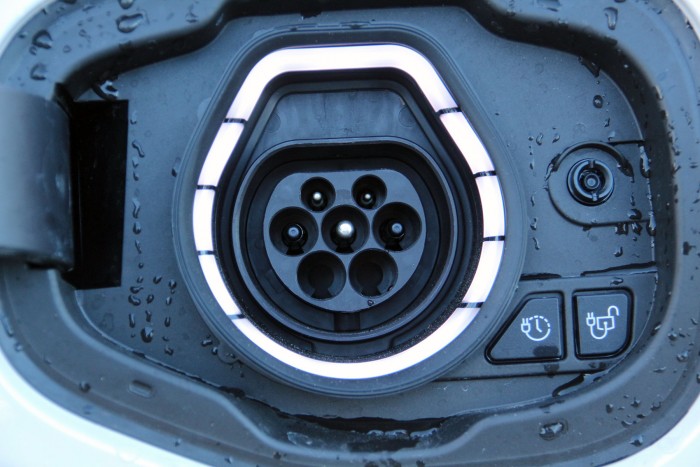
It can only be charged in one phase. The electric range is 45-50 km
The car promised an electric range of about 51 km when detached from the charger. From this you can really go 45 km without a gasoline engine, and even more in hot weather. In L, the engine braking effect is strong, but if you don’t use it, the Kuga very cleverly rolls forward when you let out the gas, thus conserving momentum.
The B&O sound system improves the quality of life on board. The Bang & Olufsen speakers play music beautifully, music can be accurately reproduced in a cooler or warmer tone, and the soundtrack also includes enhanced podcasts. The music sounds really nice and clear, which is why it’s so embarrassing when the plastic of the edge of the front door resonates under the deep sounds.
Ford’s asphalt SUVs also fall far short of premium products in that the driver’s seat seat is not long enough for tall people.
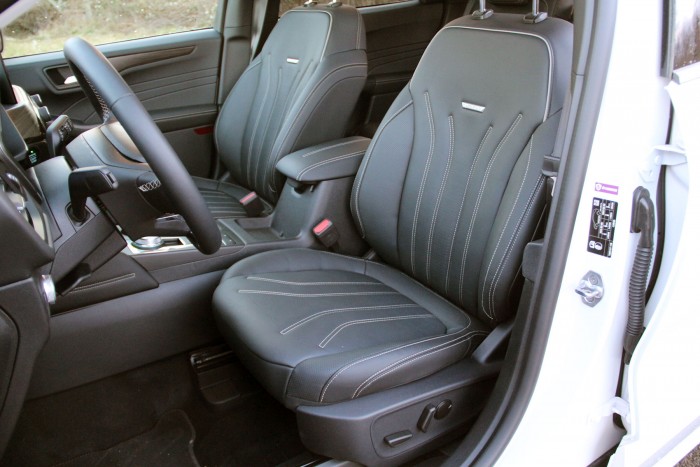
The seat is short for tall people. It is worth purchasing AGR-approved seats with extendable footrests
If you mainly use the Ford Kuga for long trips, buy the AGR-approved seat, because the brand of the Healthy Back Working Group (Aktion Gesunder Rücken) covers a more comfortable seat. Partly because of the extendable thigh support, partly because of the lumbar support that can be adjusted up and down.
On the Vignale test car, the lumbar support can only be adjusted in and out, which isn’t bad, but with the AGR seats the Kuga is more comfortable for those sitting in the front. The front windows were fitted with double glazing, which was a very tricky solution to reduce noise.































